Brad Finck - Selling With Vision - PODCAST TRANSCRIPT
June 2, 2025 at 2:00 p.m.Editor's note: The following is the transcript of a live interview with Renoworks’ Senior Vice President of Business Development, Brad Finck. You can read the interview below or listen to the podcast.
Intro: Welcome to Roofing Road Trips, the podcast that takes you on a thrilling journey across the world of roofing.
From fascinating interviews with roofing experts, to on-the-road adventures, we'll uncover the stories, innovations and challenges that shape the rooftops over our heads.
So fasten your seatbelts and join us as we embark on this exciting Roofing Road Trip.
Karen Edwards: Hello, everyone and welcome to another episode of Roofing Road Trips from RoofersCoffeeShop. My name is Karen Edwards and today's episode is really exciting.
I'm really ready to talk about it because it involves technology, it involves visualization. And I'm thrilled to welcome Brad Finck from Renoworks to the podcast. Brad, welcome.
Brad Finck: Thank you. Thank you, everyone. Glad to be here.
Karen Edwards: Yeah. So let's start out just by maybe introducing yourself. Tell us a little bit about what you do there at Renoworks.
Brad Finck: Yeah. So I've been with Renoworks for about 11 years now and for those of you who don't know Renoworks, we've been around 25 years. We produce visualization tools for the construction industry.
So a lot of manufacturers, a lot of contractors, retailers, suppliers, who all use us to help clients visualize what the products look like on their home.
I deal a lot with the various types of clients that we have, usually implementing customized solutions to meet their needs.
Karen Edwards: And you've been involved in the technology visualization, CAD space for pretty much your whole career, haven't you?
Brad Finck: Pretty much my whole career, yeah. Before I came to Renoworks, I actually spent another 20 years in the 3D CAD and what they now call BIM space, developing 3D custom solutions still for the construction industry, estimating work with accounting solutions as well.
Karen Edwards: Okay. So it's real easy to say, "It helps me see what the product is going to look like on my home as a customer or a building owner," but there's so much more, right?
The visualization software really is changing the game for homeowners, for contractors. Just give us a high-level overview of what it does and how people are using it.
Brad Finck: Yes, yes. Okay, great. And it's interesting because visualization software has been around for years, but it's only within the last nine or 10 years where it has really taken off. With everything that's gone on with Covid and the ability to need to be working a little bit more remotely, visualization has certainly become a much more must-have situation than a nice-to-have, which maybe it was 15 years ago.
But yeah, we answer that age-old question. We've all looked at a roofing swatch, for example or a siding swatch and said, "This is really nice. I like the color, I like the texture, but I really can't understand what that's going to look like on my own home." And so what Renoworks does is we primarily answer that age-old question, "This is what that's going to look like on your home."
And now you can have a much better understanding of if you go ahead with that renovation or new construction project, then I'm going to have a much higher confidence level that that product is going to look good in my environment.
Karen Edwards: Yeah. We had a new roof put on last year and looking at those boards, I should have asked the contractor if they had a visualization tool.
But fortunately, my neighbors had gotten a roof and I was like, "Well, what color did they use? Because I like how that looks," and it made it easy.
But tell me a little bit about how contractors, how are they using Renoworks?
Brad Finck: Yes, so we find that we have several different use cases. So for example, like a contractor who might be doing a site consultation going on site. What they'll often do is they might use a Google Street View image, for example, capture that client's home before they even show up on site.
And then what they can do when they're doing a consultation is they can show that client interactively what that's going to look like, with the different products and colors and textures that they might be looking to sell. They also, it's very common now to have a phone and what you could do is you could snap a photo directly of that client's home before you even knock on the door.
And because everything is now AI based, as opposed to the way it was years ago, within 10 seconds, you have that photo uploaded. And you could be sitting at the kitchen table with that homeowner showing them products and variations, as you're making and doing that consultation.
So we find that with presentation, whether it's remote or whether it's in home, has really changed, because what the contractors are now doing is they're integrating the visualization into some of the other tools that they're also using. So you can mix it with the sample boards because the samples still show you the weight and the texture.
But mixing that with a visualizer that shows you, "Well, here is now what that's going to look like on my home." And it's the client who really identifies too, because it's not just a model of their house, but it's actually their photo. It's their garden bed, it's their driveway. It really personalizes that experience for them and that's another real advantage that we bring to the contractor network.
Karen Edwards: Yeah, yeah. And I think that being able to see it in 10 seconds, that's pretty incredible.
Brad Finck: It is and that's where the AI's really come in. In the past, years ago, you had to manually trace it and prepare it, which could take half hour to an hour. But with the AI, which we've been using for the last five years or so, it's really sped up the process.
It's just made it so much easier for a contractor to be able to prepare that image and it's virtually instant, so it really has changed things. And then the other thing that we do is not only is it just on a photo for a remodeling project, but it also works on a blueprint elevation for new construction.
Or if you happen to be working with an architect who produces a rendering for you, you can actually upload that rendering as well and make those instant product selections on a new construction project as well.
Karen Edwards: Wow, that's pretty cool. Because a blueprint, turning a blueprint into a real-life model that you can try on and change the colors, that's got to be pretty impactful for the homeowner.
Brad Finck: Yeah. Yes, it is. And it really, it sets them at ease. It really helps them understand better that, "Okay, if I'm going to use this brown shingle that it does fit in with my decor. And now I have a much better comfort level that when I'm purchasing this product, it's going to really give me what I'm looking for."
And what we also find too, is that the contractors use the visualization tools for even upsell situations, so a good, better, best scenario. So they can offer them the least expensive shingle and maybe up to a steel roof that's going to cost more. But they can show them, "This is not only you're getting maybe a better quality product, but this is what it's going to look like."
And so you're going to see that it's going to actually improve the street appeal as well at the same time.
Karen Edwards: Right and the value of the home as well.
Brad Finck: And the value of the home.
Karen Edwards: Yeah. Because okay, here's your $15,000 roof and that's asphalt shingles and here's your $30,000 or $35,000 that's metal.
Being able to see that, I think, really helps make that decision process a little bit easier for the homeowners.
I'm curious, because here we mentioned asphalt, we mentioned metal, upselling. How do we get the products in there? How do I customize this for what products my business offers?
Brad Finck: Yeah. So we work with over 400 manufacturers today and that's in all categories. So roofing, siding, brick, stone, window, door, interiors as well. Getting much heavier into interiors as well and so we work directly with those manufacturers to catalog their products.
So as a contractor and let's say for example, they're using our Renoworks Pro Tool, which is designed specifically for contractors. They can pick and choose from not only the manufacturing brands that they sell, but right down to the profiles and right down to the specific colors.
So now they have that choice, whether they're sending the visualizer tool directly to the homeowner or whether they're working with them in a consultative method. They could be confident that only the products that they carry and only the products that are actually available are the ones that are going to be selected.
So that was a huge breakthrough that we introduced over the last couple of years, because we kept hearing from our clients that they didn't want their homeowner clients making product selections that weren't available. So that was something that was implemented and it's been very successful and making sure that that contractor is presenting only what they want the homeowner to see.
Karen Edwards: I imagine that is a monumental task, keeping up with 400 manufacturers and the products that they're offering.
Any insight into, do you have a bunch of little busy worker bees behind the scenes checking all that information?
I'm sure there's a lot of algorithms and things that help you out, right?
Brad Finck: Yeah, a lot of busy bees, that's for sure. And by the way, we have really good relationships with the manufacturers directly. And that's really what a lot of Renoworks is about is those relationships, making sure that we do work with those manufacturers to keep the products up-to-date as possible.
I will be the first to admit it's not perfect. There are some times when we can get a little out of date, but the relationship with the manufacturers that we have are excellent and they are really cooperative. And we keep those products up-to-date in a pretty efficient manner.
Karen Edwards: Okay. So we talked about contractors using it in the sales process. Are contractors able to offer this as a tool on their website?
Because we know today's consumer does a lot of research online before they actually speak to anybody.
Brad Finck: Exactly and yes. So that is becoming more and more, for example, if you go to a lot of manufacturers' websites, you will see and for years they've had visualizers mainly produced by Renoworks to showcase their products. And typically, it's only the products of that particular manufacturer, but now it's becoming a trend.
So as the contractors are becoming more web savvy, as they're spending more money on more complex websites, they're getting into lead capture, nurturing. Analytics and data science, what we call now, is more important to them to really understand what their clients are doing, having a visualizer embedded on their website is becoming more and more common.
Because getting the attention of that homeowner and keeping them on the website is always a challenge for any client. And so a visualizer not only helps you engage the client, it keeps them on the website longer. And once they're a little bit more comfortable and spend a little bit more time on the site, they're much more likely to give you information through a call to action, which now results in a lead that goes directly to that contractor.
So we're seeing more and more adoption of the visualizer tools on the contractors' websites, where traditionally in the past, it was primarily on the manufacturers' sites. So it's just a migration of contractors becoming more and more ingrained in technology and having their web presence become more and more important to them.
Karen Edwards: Right. Yeah, okay. So I've got some notes here that we pulled together before the conversation and I know I jumped a little bit, Brad.
I'll go back in a minute here, but I see something called Lead Pod. Can you tell me a little bit about that and what that is?
Brad Finck: Yes, so Lead Pod is a brand-new initiative at Renoworks. And what we have done, because we've captured leads for years and typically those leads would be the homeowner's name, maybe their phone number, their zip code, maybe their address.
But what we're able to do now, is we're able to capture not only that customer's information that they choose to give you, but we're able to bundle that with a lot more information about the actual project itself. So for example, a Lead Pod would be an extension of a lead.
It would also contain, bundled within it, all of the product selections that that homeowner made during the product selection process in the visualizer, okay? So that's one really good example where now, if a lead is delivered in a contractor opens that up, they'll see their basic name, address, phone number information.
But, "Oh, now I know what product selections were made. Now I know how much time they might have spent making those selections." I see how many projects that were created. So I get a lot more information regarding the customer, that now I can use when I call on that customer or when I'm dealing with that customer, to increase value to that lead.
And we're also bundling in that Lead Pod additional information, such as the average value of the home in that neighborhood or maybe the last time that roof was actually replaced. And so ancillary data can now be bundled into that Lead Pod to take that lead. Give it much more value than what we previously did and turn that into almost what we were calling a project-ready lead.
Karen Edwards: Yeah, yeah. You're building a persona for that particular lead.
Really, if you see they were looking at asphalt, if you see they were looking at metal or composites or synthetic tiles, you know that you get a feel for them and what's important to them.
Brad Finck: Well, exactly. And that lead now could be delivered just through a link, through a simple URL that can be opened up and all that information is available to you. So we can also integrate that link into a customer CRM system as well.
So if they're using a Salesforce or a HubSpot or something like that, typically more for a larger scale contractor, we can be dropping those leads into CRM, in addition with the Lead Pod links.
And now what we're giving them is just a lot more value to not only the quantity of leads that they're getting, but the quality of the lead.
Karen Edwards: Yeah, yeah. I love that you integrate with different solutions and make it easy for the contractor to work in whatever system they're used to working in.
They're not really having to make a lot of changes, it sounds like.
Brad Finck: They're not. And that's where we see as the contractors continue with more and more technology and it could be a CRM system, it could be an accounting system, it could be a sales platform.
Making sure that we integrate the visualizer into the various components of the other tools that they may already be using or may be selecting as part of their arsenal of technology, is really important to Renoworks to make sure that we're part of that sales flow and that marketing initiative.
Karen Edwards: Okay. So we were talking about busy bees and I think that leads us into one of your values is work like a farmer, right?
Brad Finck: Yes.
Karen Edwards: It resonates with the grit and adaptability that roofers live by.
And maybe you can talk a little bit about how that mindset helps you support contractors that are out there in the field.
Brad Finck: Yeah. So that work like a farmer, it's one of our core values that Renoworks adopts as a company itself. And so we understand that being a contractor, like a farmer, a lot of hard work traditionally has been one of those things where long hours, a lot of time in the field, a lot of time away from the home.
Also, a limited amount of time to learn new technology traditionally, so we understand that it's really important that we make our tools easy to use. One of those things it doesn't take a lot of training, a lot of time because typically contractors don't have a lot of time to do that. When they go home at night, they're doing their bills and their books and they're looking for more work.
So the technology is one of those things that's got to be simple and easy. And everything that we do at Renoworks, we try to initiate that mindset to produce the most efficient results that we can. And at the end of the day, make sure that the final solution is the best solution that we could be.
Karen Edwards: Yeah, yeah. It's interesting that farming, construction, some of those traditional, hardworking industries take a little bit longer to adopt technology.
And I think you hit it right on the head when you said, "Because they don't really have the time." They feel like it's going to take a lot of time for them to learn something new.
But that's just not true anymore, with today's technology in many things, not just a visualizer tool, right?
Brad Finck: Well, that's true. Traditionally, construction and farming are very similar, where a lot of things have been done the same way that we've been doing for the last 50 to 100 years. Framing of a house really hasn't drastically changed in the last 50, 60 years. Yes, there's some great, new products out there, but at the end of the day, a two-by-six framed wall hasn't really changed that much.
So it's one of those, "If it's not broke, don't fix it." But now the field has become so competitive, that people need to figure out a way, "How do I become more efficient? How do I close deals faster? How do I make more money per project?" And that's where technology comes in. I think of it too, I don't know if you've been in a dairy farm in the last five, six years.
But dairy farms are completely different than they were when I grew up. Now there's automated robots, there's automated feeding. And farmers, they're not milking the cows like they were before, but they're sitting, monitoring robots who are milking the cows on their behalf. So it's finally come to that point where they have to do that to be competitive and really the construction industry is very similar.
How do you set yourself apart from a contractor competitor, who is using visualization technology or automated methods or lead nurturing? Lots of different things out there because if you're not looking forward to some of these different technologies and new tools, you will end up falling behind at the end of the day. So one of those things to always keep in mind when you're looking for new technology.
Karen Edwards: Yeah, yeah. It's so easy today, there's no reason not to do it. Let's talk about one of your other values and that is Adventure Forward.
Explain that to me and tell me how that relates to contractors.
Brad Finck: Well, I think too, our other core value of Adventure Forward, it's about looking to the future. It's like what new technologies are out there? But even in your everyday life, what are some of the things that you're doing to better your personal life? And when it comes to a roofing contract, for example, everything is a risk. Even having your own business is a risk, we do understand that.
So adopting technology is another risk. And that's one of those things that everybody is aware of, which is why sometimes when they're looking at new technology, "Is the time right? Do I have time to learn this?" But we really stress that not only should you look at new technology, but you should look at what is the most efficient way to implement that into the systems that you're already using?
To minimize your downtime and making sure you're going to get the maximum return on investment. So like Adventure Forward, there is a risk, but if it's implemented properly and that's what we're there to help you with, the rewards are quite substantial. And so it can lead into better quality presentations, a higher quality lead, faster client product selection.
So all of these things go into taking the risk towards technology, but also reaping the rewards when implemented correctly.
Karen Edwards: Yeah, it's that old saying, "No risk, no reward." Sometimes you have to take some chances and invest in that. So yeah, this has been super interesting.
I'm curious, we talked about integrating, working with CRMs, what about contractors who are using maybe separate presentation software?
Do you incorporate into those tools that they may already be using inside the home?
Brad Finck: We do, we do. And just to mention one as an example, there's a product out there called Engage, which is very, very popular as a presentation tool. So we do have an integration, for example, with Engage. So if you're using a tool like that in order to do your digital project book, you can actually embed the visualizer inside of that as well.
And so that can now become a natural part of your presentations. And so what we do is when we want to work with any contractor, we figure out, "Well, what are you using now? What is your current process? How can we help you improve that process? What tools are you using?" And then that is something that we can work with in embedding. So we do the same thing with other companies like EagleView, for example.
For EagleView, if you're using it for roofing measurements, we actually take that EagleView data and we turn that into a 3D interactive presentation tool. So not only do you get the roofing measurements from EagleView from PDF, but now you can get a full 3D interactive model or you can do all your roofing product selections.
You can spin the model around, you can extract the measurements from the 3D model. And so we've taken that as another partnership that we've had going for a few years, that really integrates the two technologies well together.
Karen Edwards: Yeah, yeah. I love the fact that you guys have been around for so long. 25 years is a long time. And at the beginning, I know the manufacturers had the visualizers because it was within their reach.
And it wasn't really always within the reach of a contractor, a small business not doing the volume, I guess, like a manufacturer is. But the technology has advanced to the point that it's really put it in reach for anyone, right?
Brad Finck: It has, it has. Price-wise, it's inexpensive for a small contractor, for example. Because we have the relationship with the manufacturers, they can carry exactly the type of products that they want to carry.
And because of the AI and the innovation of just the fact that you don't have to manually prepare that photo any more like you used to in the old days. It just makes it so much easier for someone with very little training at all to be able to use that tool, go-to-market and start running with a visualization tool.
Karen Edwards: Okay. So how does a contractor get started? I want to use this, I want to put it into my sales presentations, maybe put it on my website. What do I do?
Brad Finck: Well, first thing is go to Renoworks.com or you can send an email to Sales@Renoworks.com. We have live demos, we have free training classes, we have YouTube videos that are able to get you up and running. But basically if you wanted to, for example, sign up for a free trial of Renoworks Pro, we have that available as well.
We can set you up with a version to use, put you through a little bit of a session to make sure you understand how to use it. Make sure that the manufacturers that you sell are available in your platform as well. And then once we have the solution that's perfect for you, then you can choose to subscribe. And it can be a monthly or it can be an annual subscription.
Karen Edwards: That's simple. And Renoworks, you guys have a full directory on RoofersCoffeeShop as well as MetalCoffeeShop. You are partners with Sherwin-Williams in their MetalVue program to help sell more metal.
So every time you turn around, Renoworks is there, so this is great to see. Brad, I want to thank you so much for being here today to talk about this really cool technology that everybody needs to be implementing into their business. Thank you. It was great.
Brad Finck: Yeah, thank you for having me, Karen. It was a pleasure and it's always great working with you guys.
Karen Edwards: Yeah and I want to thank you all out there for listening to this episode. As always, please follow us on social media.
Subscribe to our podcast on your favorite podcast platform, because we hope to see you on a future episode. Thanks, everyone. See you next time.
Outro: If you've enjoyed the ride, don't forget to hit that subscribe button and join us on every roofing adventure.
Make sure to visit Rooferscoffeeshop.com to learn more. Thanks for tuning in and we'll catch you on the next Roofing Road Trip.

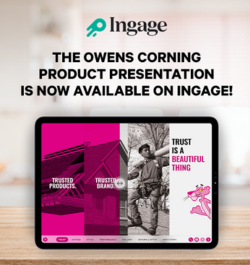





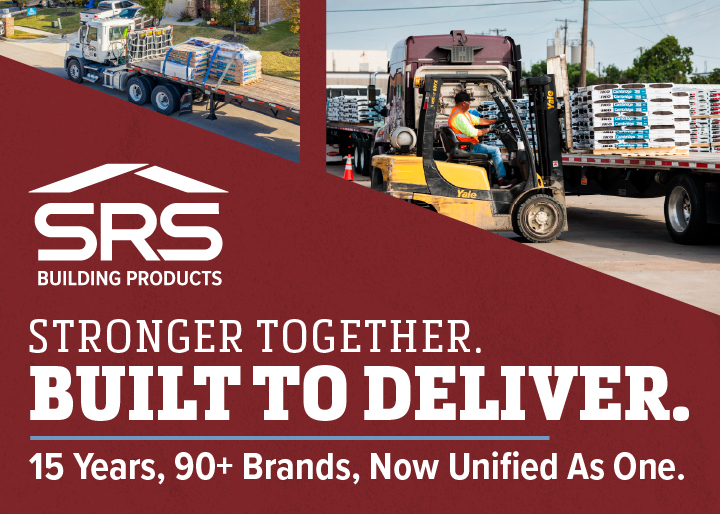
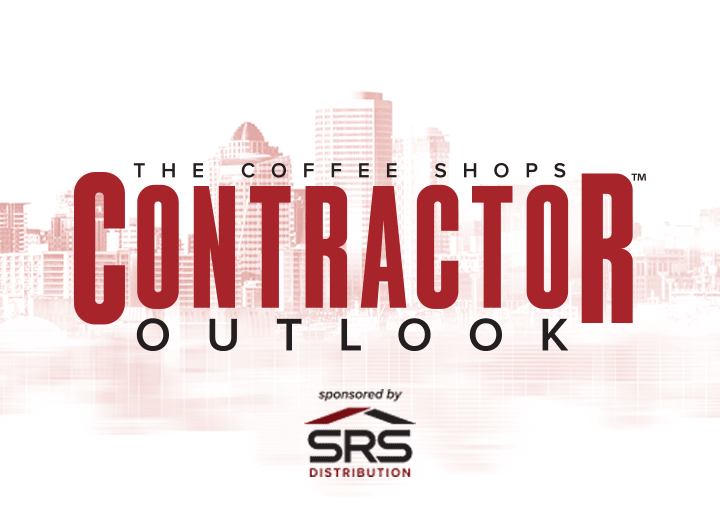

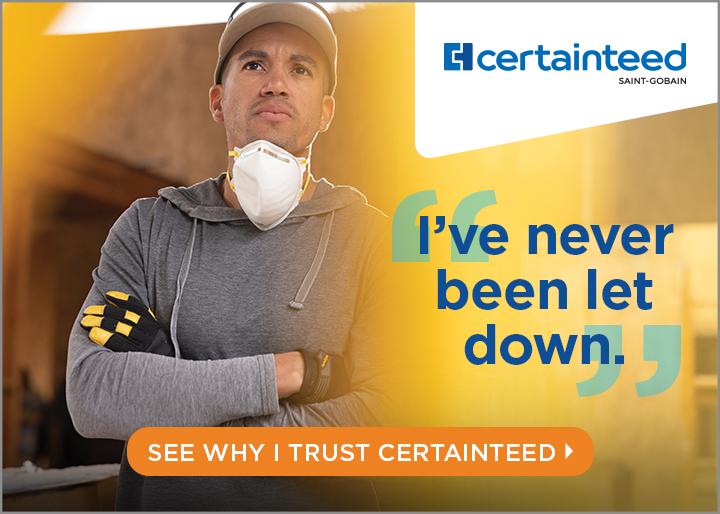
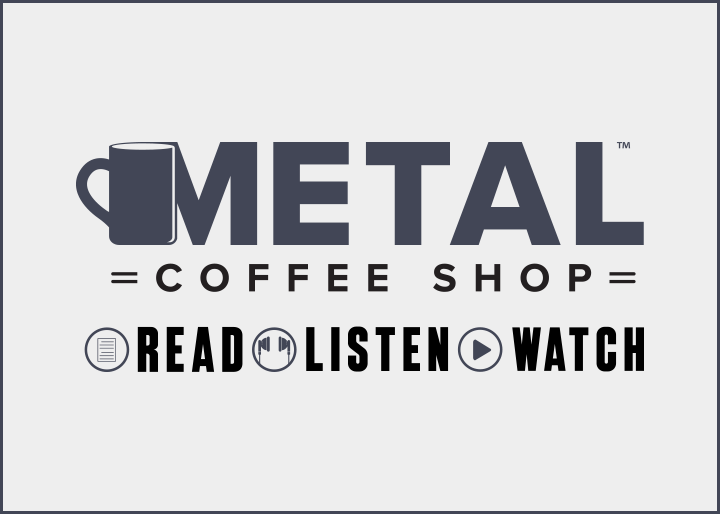

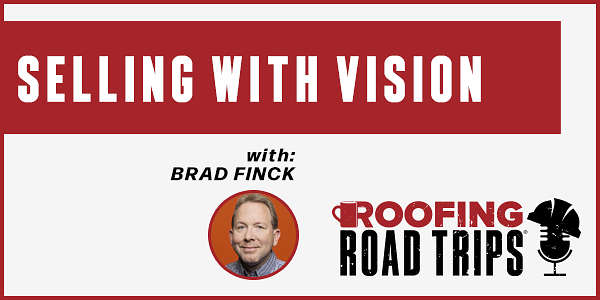
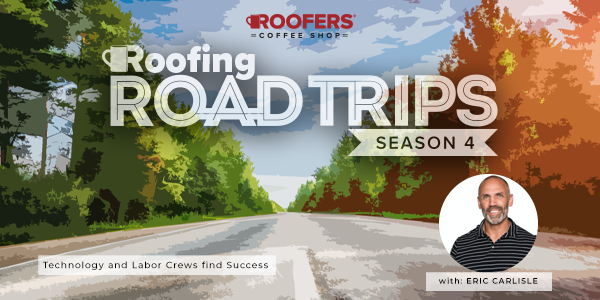
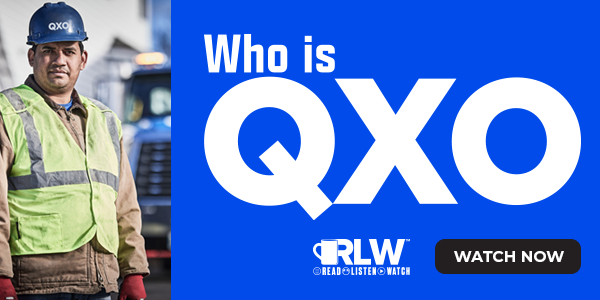
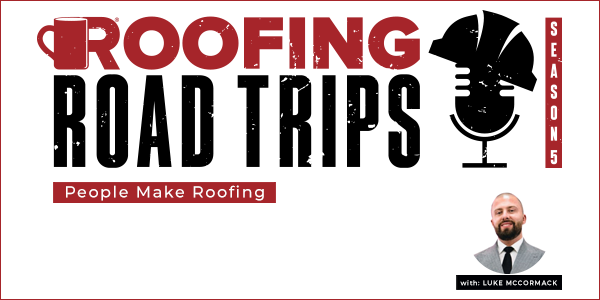



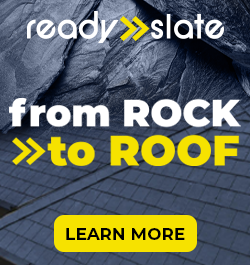

Comments
Leave a Reply
Have an account? Login to leave a comment!
Sign In